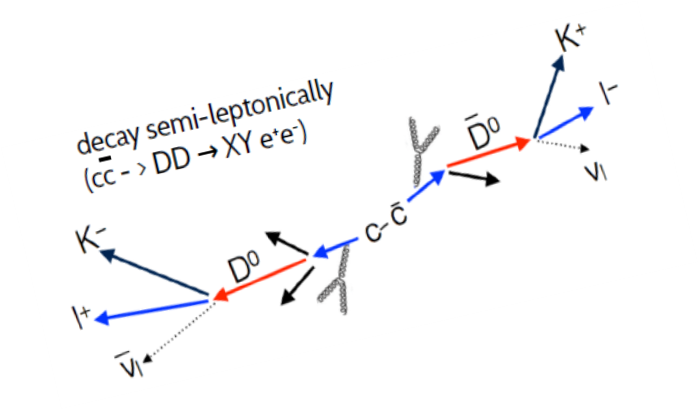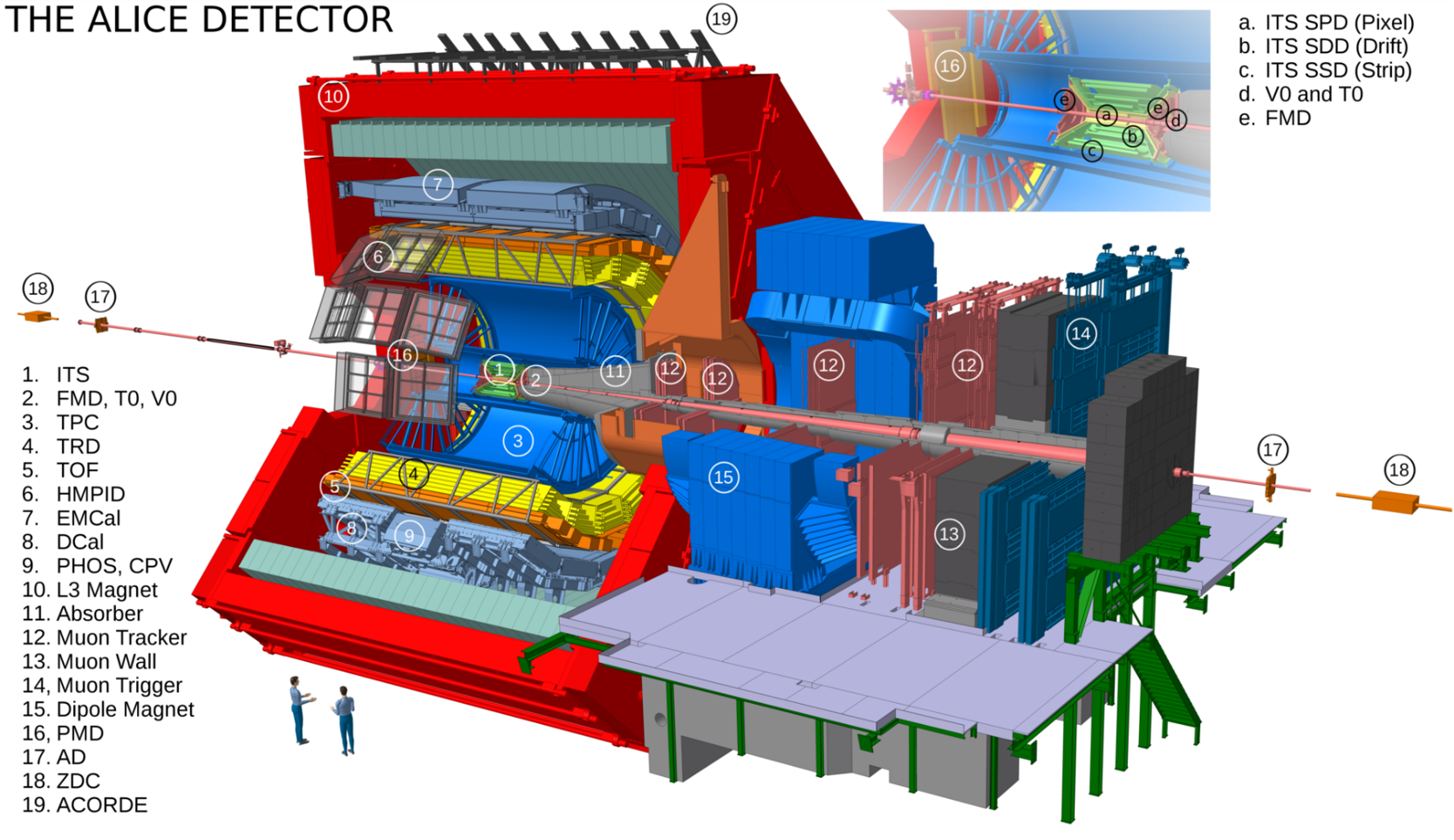Studies of Dielectrons from open charm and beauty decays
A few millionths of a second after the Big Bang, matter existed in a very different state than today, called Quark-Gluon Plasma (QGP), with quarks and gluons no more confined inside particles. Using heavy-ion collisions, scientists can recreate and study in laboratory this particular state of matter.
Studying the production of electron-positron pairs in heavy-ion collisions, with the ALICE experiment at CERN, several properties of the QGP, like its temperature, can be extracted.

One of the main background contributions to these measurements, not yet well understood, is given by the decays of particles containing heavy quarks (charm and beauty).
In this project we try to first quantify better, and then remove, this background.
In particular we are using the fact that particles containing heavy quarks show a specific decay pattern, delayed with respect to other particles that produce electron-positron pairs.
The used analysis strategy is complementary to other more traditional approaches. We are using machine learning techniques, the most updated techniques for data analysis, based on developing, testing, and applying predictive algorithms to separate the background from the signal.

Project leader:
Dr. Elisa Meninno
Duration:
2019/01/03 - 2021/01/02
Funded by:
FWF project
M 2467